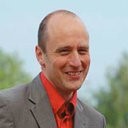Need Help?
6 September 2019
Meet the Editors | Prof. Dr. Peter Van Puyvelde - Section EiC of “Materials”

My name is Peter Van Puyvelde, full professor at the Department of Chemical Engineering of the KU Leuven. KU Leuven is the highest ranked European university in the Reuters World’s list of most innovative universities. My research focuses on the processing of polymers, with a main emphasis on structure development during or after processing. The latter has been applied in the field of biopolymers, flow-induced crystallization, and recently in the field of additive manufacturing or 3D-printing.
When you are active in the field, it is important to take up duties in science editing, since dissemination of scientific results to the community is important of course. At the moment, I am involved in three journals, Applied Sciences being one of them. It is good to keep a broad view of the various activities deployed in the domain.
I think a broad scientific view, far beyond your own field, is important in order to judge the quality of the manuscripts that you need to handle.
As a professor, a major challenge is indeed to combine the various aspects of the job. On the one hand, you need to keep up pace with the research conducted in your group, by supervising various PhD students. On the other hand, you need to keep a vision for the future, since project proposals need to be worked out. This is not easy, especially when you want to combine this with other activities such as editorial work and policy involvement. So far, I believe that my major achievement has been that I have been able to combine these activities in a rather successful manner. Currently, I am chairing the research council of KU Leuven. This council is responsible for the internal project funding of KU Leuven, ranging from theology to the hospital, which is a very interesting but very tough job to do.
The community is facing a tremendous change in philosophy, and Open Access journals such as Applied Sciences will hopefully play a more and more important role in the future. This is challenging since, on the one hand, one needs to publish as much as possible. On the other hand, guaranteeing the quality of the manuscripts is a continuous struggle which is very important for the reputation of the journal.
We are living in challenging times, and especially in the material sector, various challenges are being faced. My area is in polymer processing in general and recently, I have been working in the field of additive manufacturing, which is still a largely unexplored domain. Especially in the field of (functional) materials, a lot of things are still unknown. On the other hand, materials for energy, lightweight materials, and many other challenges could inspire many researchers worldwide.
As I already mentioned, people still need to get familiar with Open Access. This will require time, but I believe that Applied Sciences can have an impact (see, for instance, also the impact factor) and deserves its place amongst the better material-related journals.

